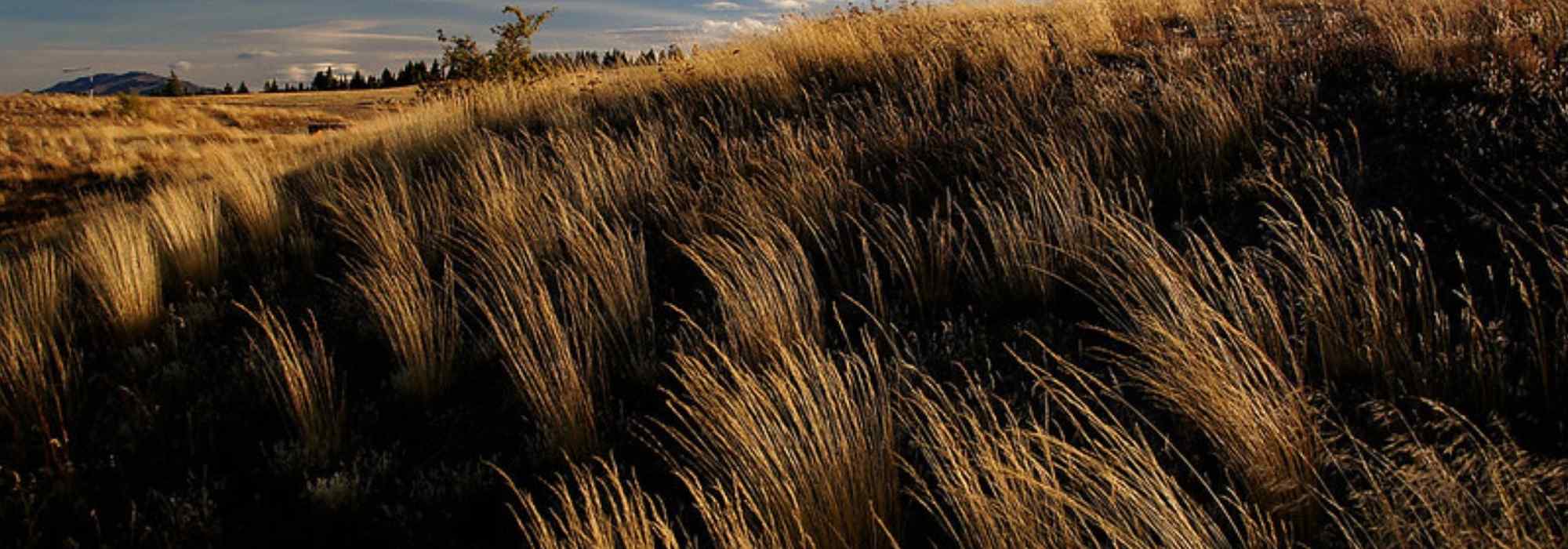
Chionochloa: Planting, Growing, and caring
Contents
The Chionochloa in a few words
- Chionochloa is a lovely perennial grass native to New Zealand
- Over the years, this grass forms a clump of evergreen green or green-bronze leaves
- In some species, the feathery inflorescence can reach up to 2 metres in height
- Chionochloas thrive in full sun in very well-drained soil
- The various species of the genus are only hardy in warm and dry conditions
The word from our expert
Rare in cultivation, chionochloas are nonetheless very beautiful perennial grasses with evergreen foliage. They form rounded, compact clumps of linear leaves, often green but sometimes bronze-green with silvery reflections, as in the case of Chionochloa rubra.
In Chionochloa rubra, the bronze flowering is rather discreet, but this is certainly not the case with Chionochloa conspicua and Chionochloa flavicans. For these two species, very large (nearly 2 m tall!) feathery panicles of silvery-cream flowers gracefully cascade above and around the clump.
Chionochloas are native to the mountainous regions of New Zealand and Australia. Consequently, they are relatively hardy (-10 °C), love the sun, and absolutely detest winter moisture. But if you provide them with a warm and very well-drained location, they will reward you with a splendid display in summer and autumn.
These grasses work wonders in dry rockeries, within an “Austral” meadow, and even along the edges of dry borders. If winters are mild in your area and your garden is situated on a rather stony, non-calcareous soil: consider Chionochloas!
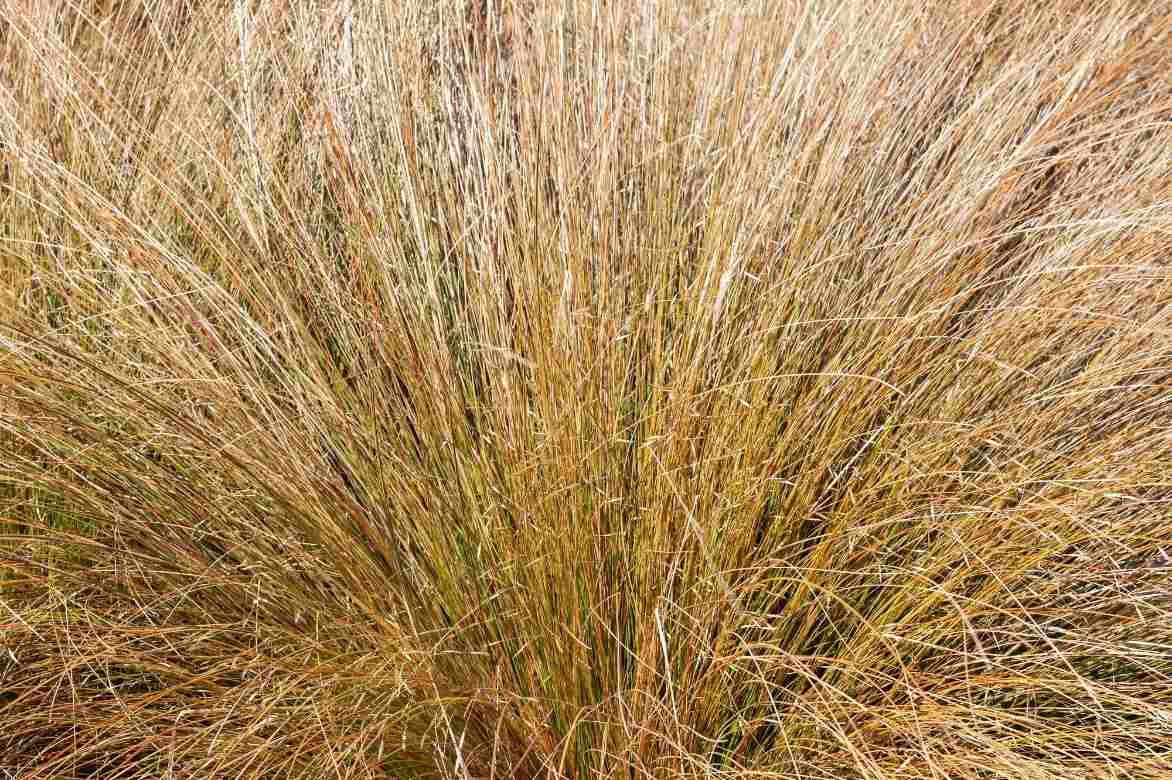
Chionochloa rubra
Botany and description
Botanical data
- Latin name Chionochloa sp.
- Family Poaceae
- Common name Chionochloa, snow grass
- Flowering from June to September
- Height up to 2 m in full bloom
- Exposure Sun
- Soil type all types of fresh but very well-drained soils
- Hardiness -12°C
The genus Chionochloa comprises 25 species native to the mountains of New Zealand and southeastern Australia. This genus belongs to the Poaceae family and the Danthonioideae subfamily. The name “Chionochloa” comes from Greek: from Chionos (snow) and Chloa (grass), referring to the natural montane habitat of these grasses. Some authors occasionally classify Chionochloa species under the genus Danthonia, which appears very close botanically.
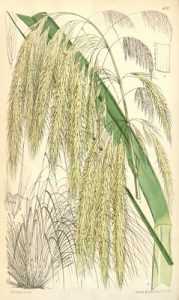
Chionochloa conspicua, botanical plate 1876
Chionochloas are perennial grasses. They form large, stiff, and dense clumps of fine, tender, evergreen leaves. The leaves are generally green but can take on a bronze-green hue with silvery reflections, as seen in Chionochloa rubra.
The summer flowering is characterised by panicles of long-pedunculate spikelets, more or less silky, sometimes reaching up to 2 m in height, as in Chionochloa conspicua or Chionochloa flavicans. The dried inflorescences can be used in creating dry bouquets.
Chionochloas are cultivated in gardens, in dry rockeries, along the edges of dry beds, or within a slightly wild meadow, inspired by southern landscapes.
Our most beautiful varieties
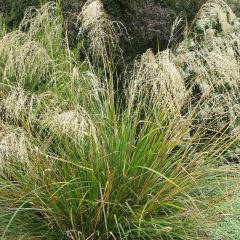
Chionochloa conspicua
- Mois de floraison August to October
- Hauteur à maturité 2 m
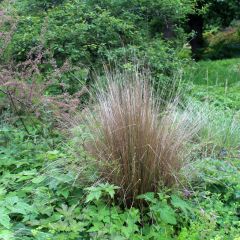
Chionochloa rubra
- Mois de floraison July, August
- Hauteur à maturité 1,50 m
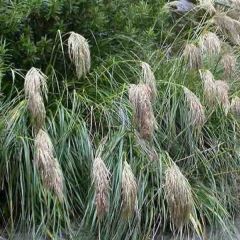
Chionochloa flavicans
- Mois de floraison August, September
- Hauteur à maturité 2 m
Planting Chionochloas
Where to Plant?
Chionochloa is a hardy grass that thrives in full sun, in a porous, stony, and very well-drained soil, free from limestone.
Chionochloas are relatively hardy: they can withstand frosts down to -10°C in very well-drained soil. They particularly dislike waterlogged soil in winter. Ensure the soil is well-drained or improve drainage by adding gravel or clay pebbles, or by planting on a mound.
When to Plant?
Planting is best done in spring, from March to May.

Chionochloa conspicua ©Peganum
How to Plant?
- Loosen the soil thoroughly to a depth of about 20 centimetres;
- Remove the plant from its pot;
- Dig a hole roughly twice the size of the root ball;
- Chionochloas require very well-drained soil: don’t hesitate to mix some gravel or clay pebbles with the soil used to fill the hole;
- Place the root ball in the centre of the hole;
- Backfill with the excavated soil (optionally mixed with gravel if the soil is too heavy) and gently firm it around the clump with your fingers;
- Water thoroughly to eliminate any air pockets between the soil and the roots.
Note: Space your clumps 60 cm apart to allow them to develop properly. A planting density of 5 clumps per square metre is recommended.
Maintenance
Maintenance is very limited: pruning is not necessary. If needed, you can trim back the dried flower stalks at the end of winter.
Diseases and Pests
The Chionochloas are not affected by any diseases or pests.
Multiplication
Dividing Clumps
Dividing old clumps can be done between April and June. Lift the clump from the ground using a digging fork. Divide the clump with a knife or the edge of a spade. However, this method of propagation is not the best: indeed, dividing the clump disrupts the ball-like effect of this grass. It is better to prioritise sowing.
Sowing
If the plant thrives in your garden, it is likely that a few spontaneous seedlings will develop near the parent plants. You can choose to leave them in place for a natural look or move them in spring to wherever you desire.
You can also sow Chionochloa seeds yourself. Harvest the seeds in autumn (October-November) for indoor sowing in a warm environment (18-20°C) in buckets with a very light substrate (half sowing compost, half river sand) at the end of winter. You can replant the young Chionochloas in the garden in April.
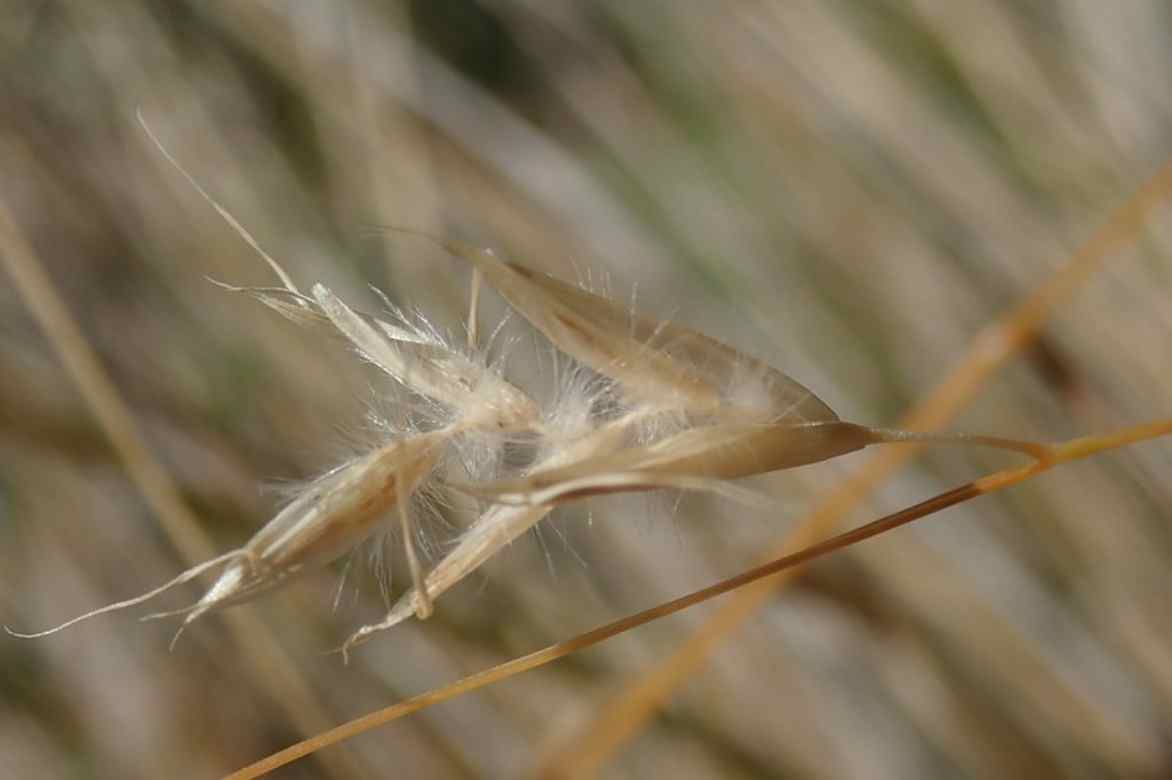
Seeds of Chionochloa rubra (© Margaret Donald)
Association
Chionochloas thrive in sunny spots and very well-drained soil. We will therefore create a small “meadow-like” bed by selecting plants that enjoy these growing conditions.
Let’s start with a few clumps of Chionochloa rubra: the foliage is green-bronze, and the flowering, though subtle, is brown-bronze in colour. The idea will be to add other grasses and flowering perennials in yellow-orange hues to maintain warm tones.
The Achillea filipendulina ‘Cloth of Gold’ offers bright yellow flowering from July to September, with flower spikes that can exceed a metre in height, all supported by grey-green foliage. Still in the yellow flowers category, the St. John’s Chamomile is a very hardy plant with a very natural appearance, ideal for rockeries or dry meadows.
A meadow is primarily made up of grasses. To accompany our Chionochloa rubra, we can plant a few Deschampsia flexuosa ‘Tatra Gold’, an evergreen and very resilient grass with striking acid yellow-green foliage that will add a bit of pep to the whole. Add to this one or two Panicum virgatum ‘Shenandoah’, where the tips of the blue-green leaves turn burgundy-red as early as July, all enhanced by remarkably coloured cloud-like inflorescences in summer and autumn.
Warm colours are lovely, but they lack a bit of contrast. What if we added some blue flowers? The Eryngium zabelii ‘Big Blue’ will be perfect for this role, thanks to its sturdy silver stems and conical grey-purple inflorescences crowned with steely blue spiky bracts. Be careful not to overdo it, though—one or two sea hollies will be more than enough to catch the eye.
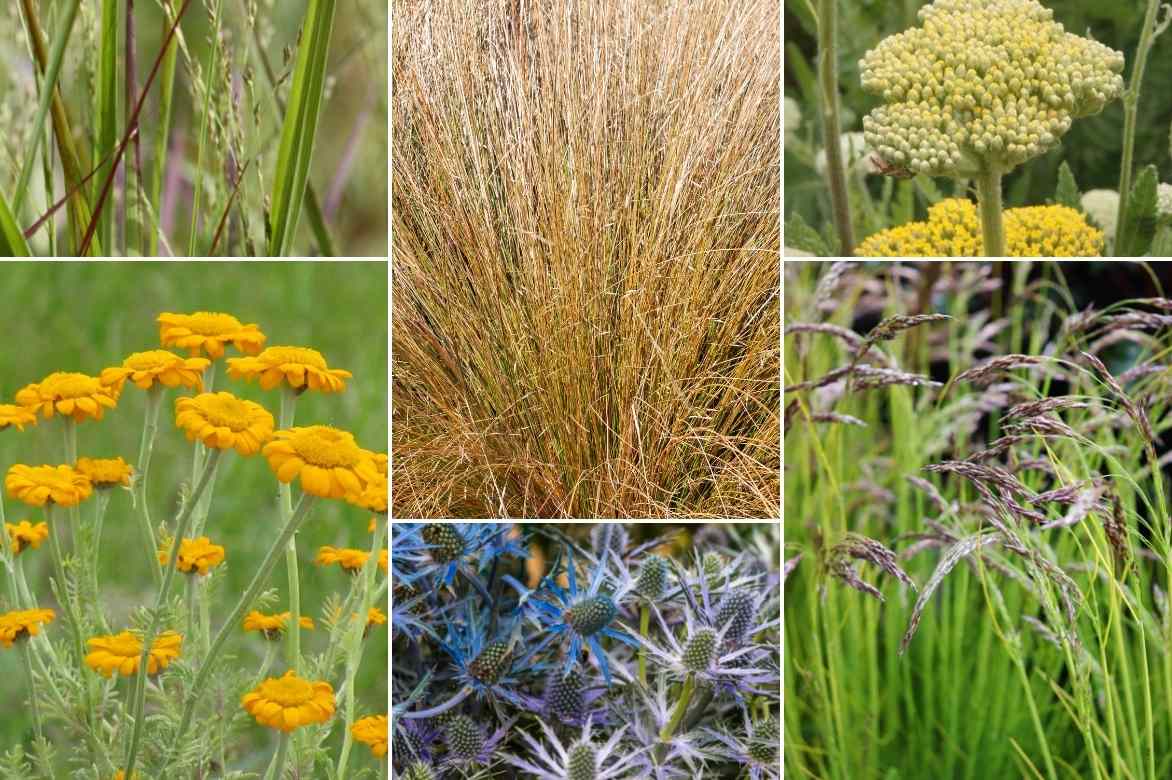
In the centre, Chionochloa rubra, in a meadow scene with Panicum virgatum ‘Shenandoah’, Anthemis ‘Sancti Johannis’, a few Eryngium zabelii ‘Big Blue’, Achillea filipendulina ‘Cloth of Gold’, and some Deschampsia flexuosa ‘Tatra Gold’
Useful resources
→ Discover our chionochloas in our online nursery.
- Subscribe!
- Contents































Comments